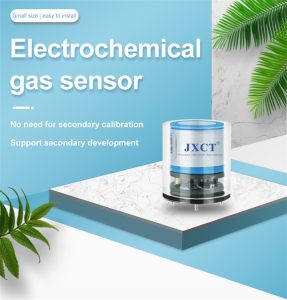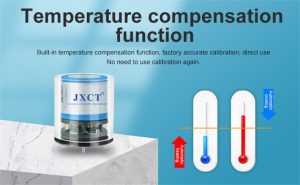Indoor air quality (IAQ) is a critical aspect of our overall well-being, as we spend a significant amount of time indoors, whether it be at home, in the office, or in other enclosed spaces. Poor IAQ can have serious health implications, leading to respiratory issues, allergies, and other ailments. To tackle this issue, gas sensor technology has emerged as a powerful tool for enhancing indoor air quality. This article explores the applications, benefits, and challenges associated with the use of gas sensors to improve IAQ
- Understanding Indoor Air Pollution: Indoor air pollution refers to the presence of harmful pollutants within enclosed spaces. Common sources of indoor air pollution include volatile organic compounds (VOCs) released from building materials and furniture, airborne particles, tobacco smoke, cooking fumes, and insufficient ventilation. Monitoring and mitigating these pollutants are vital for maintaining a healthy indoor environment.
- Gas Sensor Technology for IAQ Monitoring: Gas sensors are indispensable in detecting and measuring various indoor air pollutants. By employing advanced sensing technologies, these sensors can identify and quantify VOCs, carbon dioxide (CO2), carbon monoxide (CO), nitrogen dioxide (NO2), ozone (O3), and other harmful gases. Gas sensors operate by recognizing specific chemicals in the air and generating electrical signals that indicate pollutant concentrations.
- Applications of Gas Sensors in Enhancing IAQ: a. VOC Detection: Gas sensors can detect and monitor VOCs emitted from paints, adhesives, cleaning products, and other sources. This information enables us to identify potential sources of indoor air pollution and take corrective actions.
b. Carbon Dioxide Monitoring: Gas sensors measure CO2 levels, which indicates indoor air freshness and ventilation efficiency. High CO2 concentrations can result from inadequate ventilation, leading to drowsiness, decreased productivity, and discomfort. Gas sensors help ensure optimal ventilation for better IAQ.
c. Combustible Gas Detection: Gas sensors are utilized to detect combustible gases such as methane and propane, which can be released from gas stoves, heaters, or leaked pipelines. Prompt detection of these gases is crucial for preventing fire hazards and ensuring the safety of indoor environments.
d. Particulate Matter Monitoring: Gas sensors equipped with particle counters can measure the concentration of airborne particles. This information helps in identifying sources such as dust, pollen, pet dander, or pollutants from outdoor air infiltration. Managing particle pollution improves IAQ for allergy sufferers and those with respiratory conditions.
- Benefits of Gas Sensor Technology for IAQ Enhancement: a. Early Detection and Intervention: Gas sensors provide real-time monitoring, allowing for the early detection of indoor air pollution incidents. This enables prompt intervention, reducing health risks and preventing long-term exposure to harmful pollutants.
b. Quantitative Data: Gas sensors offer precise measurements of pollutant concentrations, providing quantitative data for accurate assessment and analysis. This information helps in evaluating compliance with IAQ standards and implementing appropriate mitigation strategies.
c. Automation and Remote Monitoring: Gas sensor networks can be integrated with automation systems, allowing for remote monitoring of IAQ parameters. This feature is particularly beneficial for large buildings or smart homes, where real-time data collection and control are essential.
d. Personalized Comfort: Gas sensors enable personalized control of indoor environments. By monitoring IAQ parameters such as temperature, humidity, and gas concentrations, gas sensors facilitate the adjustment of ventilation, air conditioning, and filtration systems to optimize comfort levels and reduce energy consumption.
- Challenges and Future Directions: a. Sensor Calibration and Maintenance: Regular calibration and maintenance of gas sensors are crucial to ensure accurate and reliable measurements. Establishing robust calibration procedures and periodic sensor checks will help address this challenge.
b. Sensor Interference and Selectivity: Gas sensors may experience interference or lack selectivity when exposed to multiple gases simultaneously. Researchers are continually working on improving sensor selectivity to enhance their accuracy and reliability in complex indoor environments.
c. Integration with Building Management Systems: Integrating gas sensors with building management systems enables efficient control and monitoring of IAQ parameters. Future developments should focus on seamless integration, data analytics, and user-friendly interfaces to facilitate widespread adoption.
d. Education and Awareness: To fully utilize the potential of gas sensor technology for IAQ enhancement, education and awareness programs are essential. Informing individuals about the significance of IAQ, the role of gas sensors, and simple actions to improve air quality will promote proactive measures and a culture of healthy indoor environments.
Conclusion: Gas sensor technology offers tremendous potential for enhancing indoor air quality. By detecting and measuring indoor air pollutants, gas sensors enable real-time monitoring, reliable data analysis, and timely interventions. Leveraging the benefits of gas sensor technology, we can create healthier indoor environments, improve productivity, and safeguard our well-being. Overcoming technical challenges and raising awareness about IAQ are crucial steps toward realizing the full potential of gas sensor technology for a healthier and more comfortable future.
 : +86 155 8830 2704
: +86 155 8830 2704 : jxdziot@gmail.com
: jxdziot@gmail.com
